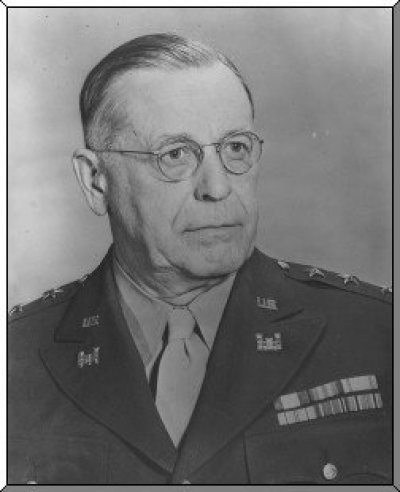The Manhattan Project was a research and development undertaking during World War II that produced the first nuclear weapons. It was led by the United States with the support of the United Kingdom and Canada. From 1942 to 1946, the project was under the direction of Major General Leslie Groves of the U.S. Army Corps of Engineers. Nuclear physicist Robert Oppenheimer was the director of the Los Alamos Laboratory that designed the actual bombs. The Army component of the project was designated the Manhattan District as its first headquarters were in Manhattan; the placename gradually superseded the official codename, Development of Substitute Materials, for the entire project. Along the way, the project absorbed its earlier British counterpart, Tube Alloys. The Manhattan Project began modestly in 1939, but grew to employ more than 130,000 people and cost nearly US$2 billion (equivalent to about $23 billion in 2020). Over 90 percent of the cost was for building factories and to produce fissile material, with less than 10 percent for development and production of the weapons. Research and production took place at more than thirty sites across the United States, the United Kingdom, and Canada.
The Project let to the development of two types of atomic bombs, both developed concurrently, during the war: a relatively simple gun-type fission weapon and a more complex implosion-type nuclear weapon. The Thin Man gun-type design proved impractical to use with plutonium, so a simpler gun-type called Little Boy was developed that used uranium-235, an isotope that makes up only 0.7 percent of natural uranium. Because it was chemically identical to the most common isotope, uranium-238, and had almost the same mass, separating the two proved difficult. Three methods were employed for uranium enrichment: electromagnetic, gaseous and thermal. Scientists conducted most of this work at the Clinton Engineer Works at Oak Ridge, Tennessee.
In parallel with the work on uranium was an effort to produce plutonium, which researchers at the University of California, Berkeley, discovered in 1940. After the feasibility of the world's first artificial nuclear reactor, the Chicago Pile-1, was demonstrated in 1942 at the Metallurgical Laboratory in the University of Chicago, the Project designed the X-10 Graphite Reactor at Oak Ridge and the production reactors at the Hanford Site in Washington state, in which uranium was irradiated and transmuted into plutonium. The plutonium was then chemically separated from the uranium, using the bismuth phosphate process. The Fat Man plutonium implosion-type weapon was developed in a concerted design and development effort by the Los Alamos Laboratory.
The project was also charged with gathering intelligence on the German nuclear weapon project. Through Operation Alsos, Manhattan Project personnel served in Europe, sometimes behind enemy lines, where they gathered nuclear materials and documents, and rounded up German scientists. Despite the Manhattan Project's tight security, Soviet atomic spies successfully penetrated the program.
The first nuclear device ever detonated was an implosion-type bomb during the Trinity test, conducted at New Mexico's Alamogordo Bombing and Gunnery Range on 16 July 1945. Little Boy and Fat Man bombs were used a month later in the atomic bombings of Hiroshima and Nagasaki, respectively, with Manhattan Project personnel serving as bomb assembly technicians and weaponeers on the attack aircraft. In the immediate postwar years, the Manhattan Project conducted weapons testing at Bikini Atoll as part of Operation Crossroads, developed new weapons, promoted the development of the network of national laboratories, supported medical research into radiology and laid the foundations for the nuclear navy. It maintained control over American atomic weapons research and production until the formation of the United States Atomic Energy Commission in January 1947.
Eugene Reybold (February 13, 1884 – November 21, 1961) was distinguished as the World War II Chief of Engineers who directed the largest United States Army Corps of Engineers in the nation's history.
Reybold was born in Delaware City, Delaware. He graduated from Delaware College in 1903. Commissioned in the Coast Artillery Corps in 1908, Reybold was assigned to military housing and coast defense construction work. Stationed at Fort Monroe throughout World War I, he became commandant of the Coast Artillery School in 1919. He then transferred to the Corps of Engineers in 1926 and served as District Engineer in Buffalo, New York; Wilmington, North Carolina; and Memphis, Tennessee. In the last assignment he successfully battled record Mississippi River flood crests. He was appointed Southwestern Division Engineer (1937–40) and War Department Assistant Chief of Staff, G-4 (1940–41). Appointed Chief of Engineers shortly before Pearl Harbor, General Reybold directed the Corps' tremendous range of activities throughout the war and became the first Army officer ever to attain the rank of Lieutenant General while serving in the position of Chief of Engineers.
General Reybold retired on January 31, 1946, and died November 21, 1961, in Washington, D.C. He was awarded a Distinguished Service Medal with Oak Leaf Cluster.

1942Aug, 13
Major General Eugene Reybold of the U.S. Army Corps of Engineers authorizes the construction of facilities that would house the "Development of Substitute Materials" project, better known as the Manhattan Project.
Choose Another Date
Events on 1942
- 25Jan
Thailand
World War II: Thailand declares war on the United States and United Kingdom. - 8Mar
Myanmar
World War II: Imperial Japanese Army forces captured Rangoon, Burma from British. - 10Jul
Soviet Union
Diplomatic relations between the Netherlands and the Soviet Union are established. - 13Aug
Manhattan Project
Major General Eugene Reybold of the U.S. Army Corps of Engineers authorizes the construction of facilities that would house the "Development of Substitute Materials" project, better known as the Manhattan Project. - 25Sep
Holocaust
World War II: Swiss Police instruction dictates that "Under current practice ... refugees on the grounds of race alone are not political refugees", effectively denying entry to Jews trying to flee occupied Europe during the Holocaust.

 English
English  español
español  français
français  português
português  русский
русский  العربية
العربية  简体中文
简体中文 